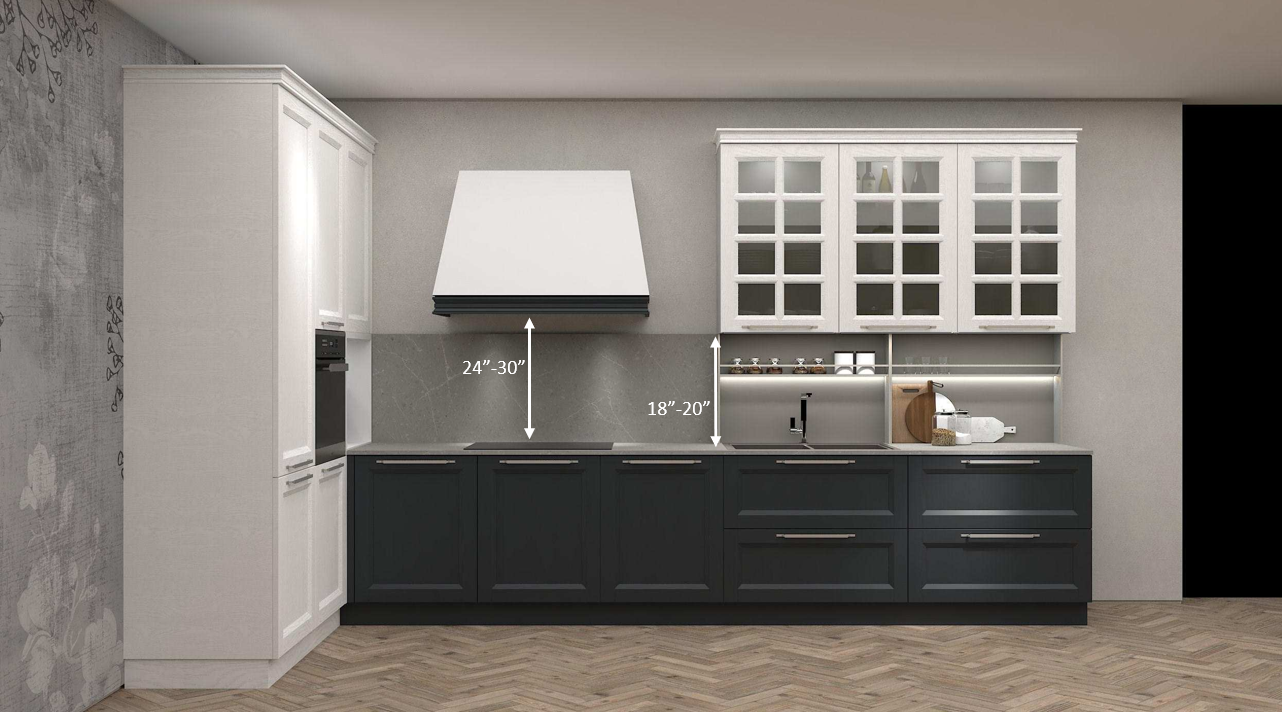A well-designed kitchen not only enhances functionality but also ensures safety and efficiency. North American standards provide guidelines for the minimum and maximum distances between countertop and wall cabinets, as well as essential considerations for the placement of stove hoods.
1. Countertop and Wall Cabinets: Finding the Right Balance
In North America, the standard distance between the countertop and the bottom of wall cabinets is typically set between 18 to 20 inches. This range ensures that the countertop remains both accessible and functional for various kitchen activities while providing ample space for preparing and cooking.
Minimum Distance: The minimum distance is crucial to prevent countertops from feeling cramped. A minimum of 18 inches allows for comfortable use of small kitchen appliances and facilitates food preparation without restrictions.
Maximum Distance: On the other end of the spectrum, a maximum distance of 20 inches is set to maintain an ergonomic and visually appealing kitchen design. Beyond this limit, the distance may compromise functionality, making it challenging to reach and utilize upper cabinet space efficiently.
2. Stove and Hood Placement: A Crucial Duo
When it comes to the stove and hood arrangement, adhering to specific guidelines ensures a safe and effective cooking environment.
Standard Distance Between Stove and Hood: The standard distance between a stove and the hood or ventilation system typically ranges from 24 to 30 inches. This distance is designed to capture and eliminate cooking by products, such as smoke and odors, effectively. It’s important to refer to the manufacturer’s recommendations for your specific stove and hood models, as they may provide specific guidelines for optimal performance.
Considerations for Stove Hood Placement:
- Ventilation Efficiency: Placing the hood within the recommended distance ensures that it effectively captures and expels cooking by products, maintaining a clean and odor-free kitchen.
- Safety: Adequate space between the stove and hood helps prevent accidents and allows for safe operation of both appliances.
- Aesthetics: Optimal placement contributes to a visually balanced kitchen design, enhancing the overall appeal of the cooking area.
In conclusion, adhering to North American standards for the distances between countertop and wall cabinets, as well as stove and hood placement, is key to achieving a functional, safe, and aesthetically pleasing kitchen. These guidelines serve as valuable tools for both homeowners and designers in creating kitchens that are not only beautiful but also highly efficient.
